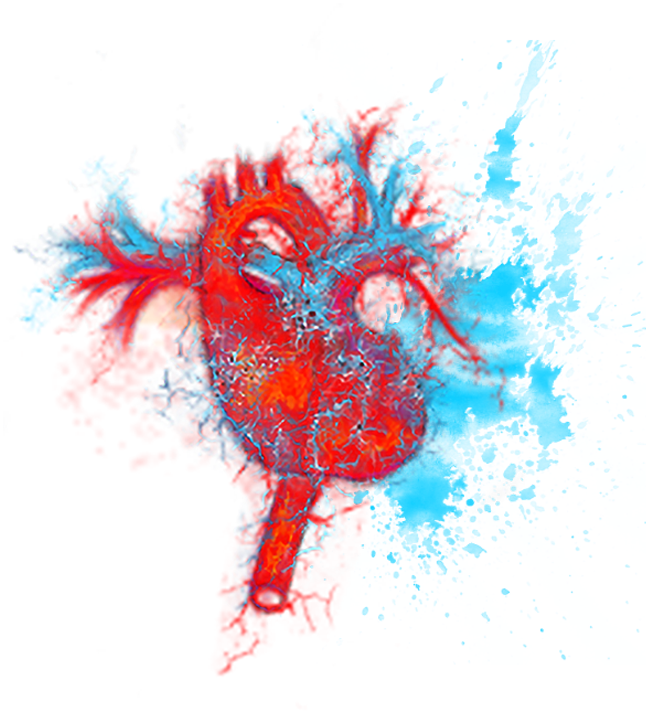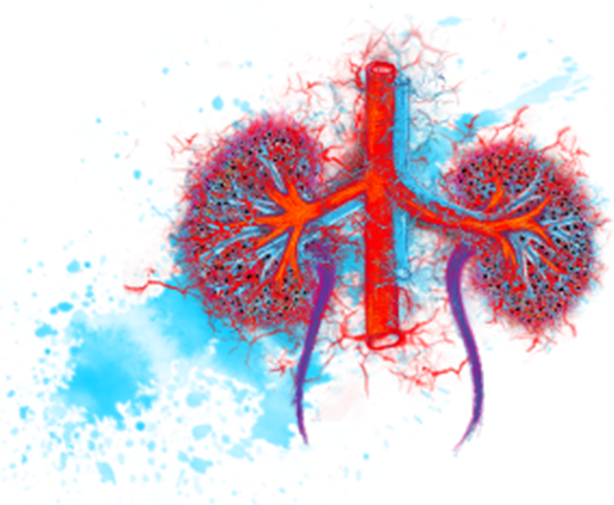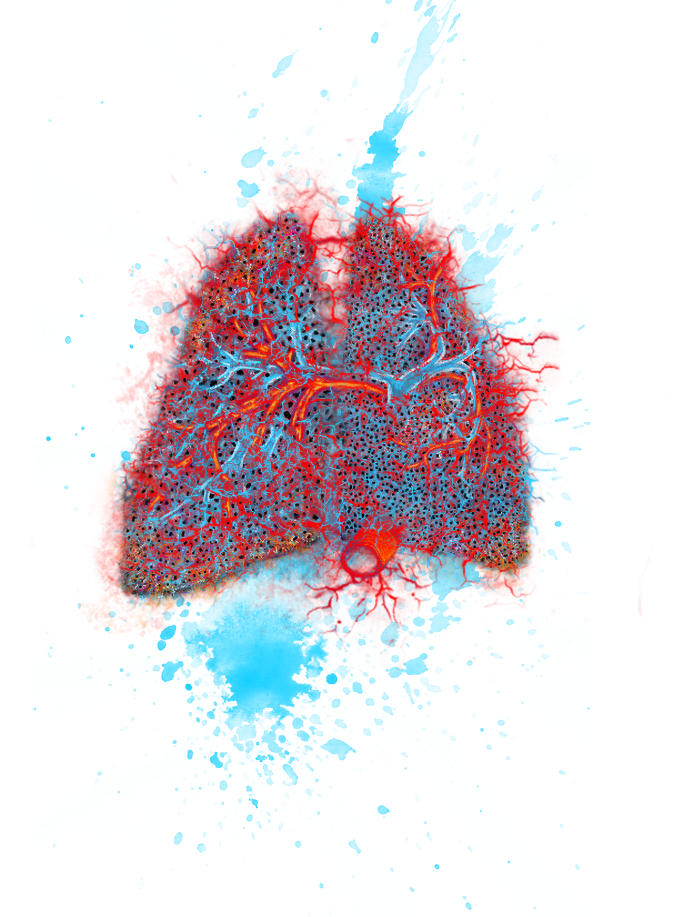


Glossary
A B C D E F G H I J K L M N O P Q R S T U V W X Y Z
A
ANCA
Stands for Anti-Neutrophil Cytoplasm Antibody.
ANCA test
A type of blood test used to detect the presence and level of ANCA within your blood.
Anaemia
A condition where there are too few healthy red blood cells to carry the normal amount of oxygen to the body’s tissues, leading to feelings of tiredness and/or weakness.
Antibody
A protein produced by plasma cells that the immune system generates to respond to a specific antigen.
Antigen
A substance that the immune system perceives as ‘foreign’ or dangerous. The body responds to antigens by producing antibodies.
Autoantibody
A type of antibody produced by the immune system that binds to one of the body’s own proteins instead of a foreign object, leading to autoimmune diseases.
Autoimmune disease
Occurs when the disease is caused by the body’s own immune system. This autoimmune reaction (or ‘attack’) triggers the development of the disease.
B
Biopsy
In a biopsy, a small sample of tissue is removed from the body so it can be examined under a microscope.
Bone marrow suppression
A side effect of some medicines that means fewer blood cells are produced in the bone marrow than usual.
C
C5a
A protein within the complement system that plays a key part in AAV-related inflammation.
CT scan
A type of imaging procedure which uses X-rays to create detailed images of an area inside the body.
Churg-Strauss syndrome
The original name for Eosinophilic Granulomatosis with Polyangiitis, please see ‘EGPA’ for full description.
Cognition
The mental processes involved in thinking clearly and understanding information.
Comorbidities
Other diseases that you may well have as well as AAV, such as diabetes or asthma.
Complement system
Proteins including C5a that form part of the immune system, increasing the body’s ability to fight infection, but can lead to unwanted inflammation in people with AAV.
Cyclophosphamide
A medicine used to control autoimmune diseases like AAV by suppressing the immune system’s response.
E
EGPA
Eosinophilic Granulomatosis with Polyangiitis, previously called Churg-Strauss syndrome, a type of AAV that often affects the lungs and/or sinuses
Eosinophils
A type of white blood cell that helps the body’s allergic responses.
F
Fatigue
Extreme tiredness and exhaustion that doesn’t always go away with rest or sleep and may affect people physically and emotionally.
Flare
A sudden and quick change/worsening of AAV symptoms.
G
GPA
Granulomatosis with Polyangiitis, previously called Wegener’s, a type of AAV that usually begins in the nose, ears, eyes or mouth
Genetics
The physical characteristics that a person inherits from their parents.
Glomeruli
Networks of small blood vessels that filter blood within the kidney.
Glucocorticoids
Steroid hormones that are used to treat diseases caused by an overactive immune system.
Granulomatosis
The small, nodule-like groups of cells which commonly form in GPA patients’ sinuses and lungs.
I
Imaging
In medicine, imaging is a technique which allows healthcare professionals to look inside the patient’s body, helping them diagnose and treat disease by revealing internal structures that would otherwise be hidden by skin and bones.
Immune system
The organs and processes within the body that enable it to respond to and fight infection and toxins.
Immunosuppressant
A type of medicine that reduces or prevents activity within the immune system.
Immunosuppression
The use of immunosuppressants to control a patient’s immune system response.
Induction therapy
The first treatment in AAV used to get remission.
L
Laboratory test
A medical procedure that involves testing a sample of blood, urine, or other substance from the body.
Leucopenia
A condition where someone has a reduced number of white blood cells, putting them at greater risk of infection.
M
MPA
Microscopic Polyangiitis, a type of AAV that typically affects the kidney
MPO
Short for myeloperoxidase, this protein is one of the two proteins that an ANCA is formed against.
MRI scan
A type of imaging procedure that uses radio waves and a magnet to create detailed images of areas inside the body.
Methotrexate
An immunosuppressant that is used to treat AAV and a number of other conditions.
Microbial
Relating to small (micro) organisms, especially disease-causing bacteria.
Monoclonal antibody
Monoclonal means all of the same type, so each monoclonal antibody (or MAB) reacts to a single antigen. MABs are made in a laboratory.
Mycophenolate mofetil
Another immunosuppressant that is used to treat AAV as well as various other conditions.
N
Neutropenia
Having an unusually low number of neutrophils in your blood.
Neutrophil
A type of white blood cell that protects the body from infections, among other functions.
O
Osteoporosis
A condition that makes bones more fragile, increasing the risk of a broken bone, and can occur following prolonged use of steroids.
P
PR3
Short for proteinase 3, this protein is one of the two proteins that an ANCA is formed against.
Pain diary
A record to help doctors understand your pain. Each time you feel pain, note down how bad it is (from 1-10), what it feels like, where it is, how long it lasts, what medication you took and whether anything made it feel better or worse.
Plasma cell
A type of white blood cell which produces a single type of antibody.
Plasma exchange
Also known as plasmapheresis, this involves plasma being removed from the blood and replaced with new plasma fluid through a specially designed machine.
Progressive
A progressive disease is one that gradually becomes more severe over a period of time.
Pulmonary haemorrhage
Bleeding from inside the airways in the lung. The condition requires immediate treatment.
R
Rare disease
A disease that affects fewer than 1 in 2000 people
Refractory treatment
The treatment given after a condition has not responded to previous treatments. Refractory treatment will usually involve experts reviewing your diagnosis and deciding whether to optimise your existing treatment or considering other drugs.
Relapse
Refers to disease that was previously well-controlled with or without treatment, but has become active again.
Remission
A reduction in the severity of disease. Remission can be full (meaning that no activity is currently occurring as a result of active disease) or partial (meaning that disease activity has been reduced).
Remitting
A disease with a remitting course is one where a patient is able to achieve remission.
Respiratory tract
The parts of the mouth, nose, throat and lungs through which air passes when people breathe.
Rituximab
A type of monoclonal antibody used to treat AAV and other diseases.
S
Sensorineural hearing loss
A form of hearing loss that reduces the ability to hear quiet sounds, and impacts the quality of sound people hear
T
Thrombocytopenia
A condition where someone has a low blood platelet count, meaning that it is more difficult for their blood to clot.
V
Vascular system
The vascular system, also called the circulatory system, is made up of the vessels that carry blood and lymph (a fluid containing white blood cells) around the body.
W
Wegener’s
The original name for Granulomatosis with Polyangiitis, please see ‘GPA’ for full description.
X
X-ray
A type of imaging procedure where high-energy rays are used to create a picture of an area inside the body.

Events
Local Support
Vasculitis International
Europe
Selbsthilfe Vaskulitis e.V.
Germany
Association Vascularites
France/Belgium
Vasculitis Stichting
Netherlands
Selbsthilfe Vaskulitis Mainz
Germany
Liga Portuguesa Contra as Doenças Reumáticas
Portugal
Asociación Española de Vasculitis Sistémicas
Spain
Suomen Vaskuliittiyhdistys ry
Finland
Associazione Pazienti della Sindrome di Churg Strauss
Italy
Vasculitis Stowarzyszenie Chorych
Poland
Associazione Nazionale Malati Reumatici ONLUS
Italy
Associazione Malattie Autoimmuni
Italy
Australia and New Zealand Vasculitis Society
Australia / New Zealand
Federación Española de Enfermedades Raras
Spain
Liga Reumatológica Española
Spain


This website is educational, non-promotional and intended for international audiences, excluding residents of the United States, the United Kingdom and Ireland. For more information, contact medinfo@viforpharma.com.
HQ-AVA-2000006 / Date of preparation: August 2023 © 2024 Vifor Fresenius Medical Care Renal Pharma

Vous quittez maintenant notre site web et vous vous dirigez vers un site web tiers que nous ne gérons pas. Nous ne sommes pas responsables du contenu de ce site tiers. Nous vous conseillons de consulter sa politique de confidentialité, qui peut être différente de la nôtre. Êtes-vous sûr de vouloir quitter le site?
On a scale from 0 to 10, how likely are you to recommend this page to another AAV patient/carer?
Less likely
0
1
2
3
4
5
6
7
8
9
10
Very likely
Thank you for your feedback!
We appreciate you taking the time to share your thoughts with us.
Your responses are invaluable in helping us enhance our website and provide a better experience for all users.

